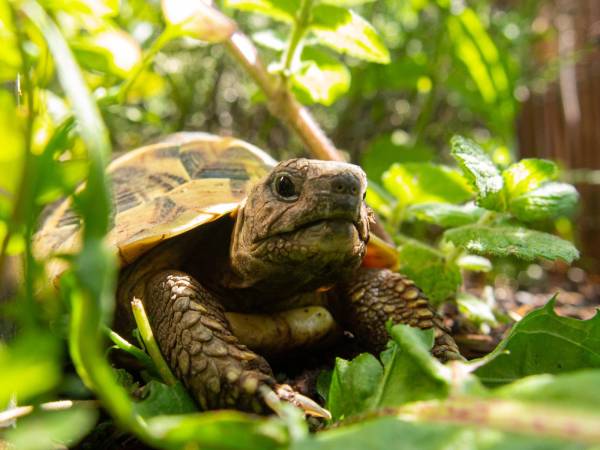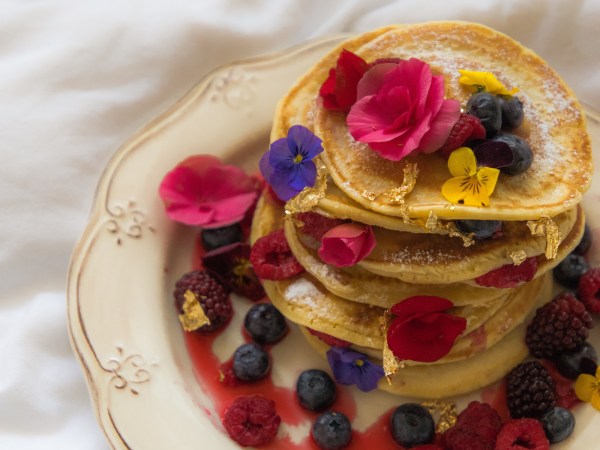

For many home gardeners, pesticides are an easy way to keep their precious plants thriving and uneaten. But chemicals are costly. Not only did American households spend more than $3 billion on these killers in 2012 (according to the most recent available federal data), these concoctions are also an ethically grey method of eliminating pests. As more and more pesticides are applied, they affect fewer and fewer bugs. Worse, pest chemicals can accumulate in the bodies of living creatures and play a part in wiping out pollinator insects, tainting groundwater, and poisoning wildlife.
“[Pesticides’] excessive use has a deleterious effect on humans and the environment; their presence in food is particularly dangerous,” researchers at Poland’s Gdansk University of Technology wrote in a 2011 article published in Trends in Analytical Chemistry. “With their environmental stability, ability to bioaccumulate and toxicity, pesticides may place the human body at greater risk of disease and poisoning.”
No matter how you spin it, toxins are bad for your health. Using them in your yard could affect you, your family, and your loved ones. But garden pests certainly aren’t going to disappear on their own. What to do?
How to fight pests with plants
Before there were powders, dusts, and sprays, plants needed their own defenses against insects and other creatures. Some developed noxious odors, while others used poisons and unpleasant flavors to protect themselves. Ancient farmers picked up on these characteristics, discovering that “pesticide plants” grown alongside cultivars resulted in better yields and less labor-intensive growing. Companion planting was born.
You can find examples of pesticide plants stretching back thousands of years. Native Americans, for example, may have developed companion planting as early as 10,000 years ago, long before home gardening became a pastime. Although synthetic chemical-based pesticides have become common, you don’t need to follow that trend.
When you use plants to keep pests away, you’re employing a proven gardening technique backed by scientific research. Installing the right plants in your garden is fast, easy, and (the best part) extremely fun. If you’re not sure where to start, we have some suggestions for every planting zone in the US.
What to plant in the west
Western America is known for hot, dry summers with little rainfall. This means that your pesticide plants should be particularly hearty and drought-resistant.
Sunflowers (Helianthus) are a trap species for destructive pests like beetles, a great way to feed birds with nutrient-rich seeds, and an excellent method of attracting predators for pest control. Sunflowers “trap” insects by keeping their attention away from the rest of your yard, giving sensitive plants a chance to thrive.
Rosemary (Salvia rosmarinus) repels soft-bodied pests such as snails and slugs.
Lavender (Lavandula) can deter both insects and mammals, including deer.
What to plant in the Midwest
With extreme temperature shifts and deep winters, the best pesticide plants for the Midwest are ones that survive deep freezes. Thanks to the many layers of planting zones in this region, there are a variety of options to choose from.
Borage (Borago officinalis) is a hardy and disease-resistant plant that repels vegetable pests like cabbage worms. Sometimes called the “starflower,” this herb attracts many types of pollinator species, and has fuzzy, edible flowers in the summer.
[Related: 7 edible flowers and how to use them]
Common chrysanthemums (Chrysanthemum × morifolium) are an ingredient in many natural pest control mixtures, releasing powerful chemicals known as pyrethrins.These flowering plants are best grown near entry points like doors and windows, where they can deter fleas, ticks, and sometimes bed bugs.
Nasturtiums (Tropaeolum) are considered to be one of the strongest pesticide plants available. They repel small insects such as squash borers and whiteflies, while attracting predatory insects like wasps.
What to plant in the north
Cooler areas of the US can be tricky growing spaces. Finding adequate pest-deterring plants is no exception. Be sure to hone in on plants that suit your gardening skills well.
Garlic (Allium sativum) works well against rodents, including mice, gophers, moles, and voles.
Catnip (Nepeta cataria) deters mosquitoes and fruit flies. Some scientists theorize it could be just as effective as DEET (without the harmful effects to people or pets).
Marigolds (Calendula officinalis) are useful against some types of plant-destroying worms called nematodes.
What to plant in the south
High humidity and tropical storms means southern growers should rely on blight-resistant plants. Humidity allows fungus and mold to spread rapidly, while frequent rainfall allows mold to infest new soil. Planting options usually include hearty perennial varieties that can be purchased at any plant store.
Daffodils (Narcissus poeticus) are a spring-blooming bulb plant with the ability to deter moles. Their ability to return year after year makes them an easy pick.
[Related: How to make cut flowers last longer]
Evening primrose (Oenothera biennis) is a native plant that acts as a trap crop for Japanese beetles. By pulling pests away from other targets in your garden, you have a better shot at growing less chewed-on produce.
Petunias (Petunia × hybrida) eliminate pests that destroy vegetable gardens, including tomato hornworms, aphids, squash bugs.
Maintaining your pest-deterring plants
Like every plant in your garden, pesticide plants require at least some maintenance to thrive. Several plants above are perennial or self-seeding, and will come back every year with minimal upkeep. Others, including sunflowers and select herbs, may be annuals only. Keep this in mind while finishing your yearly planting.
More than anything, it’s important to keep an eye on your yard’s ecosystem. If plants don’t seem to be thriving, or if there are still a surprising number of pests around (insects or otherwise), you might want to retool your chosen species and their pesticide plant companions.
Your end goal is a toxin-free yard. Once you’ve succeeded in keeping synthetic pesticides out of your yard, you’ll be able to reap the benefits of increased biodiversity around your home, a stronger garden, and a physically healthier crop yield. You’ll fall in love with all your new, helpful plants in no time.














